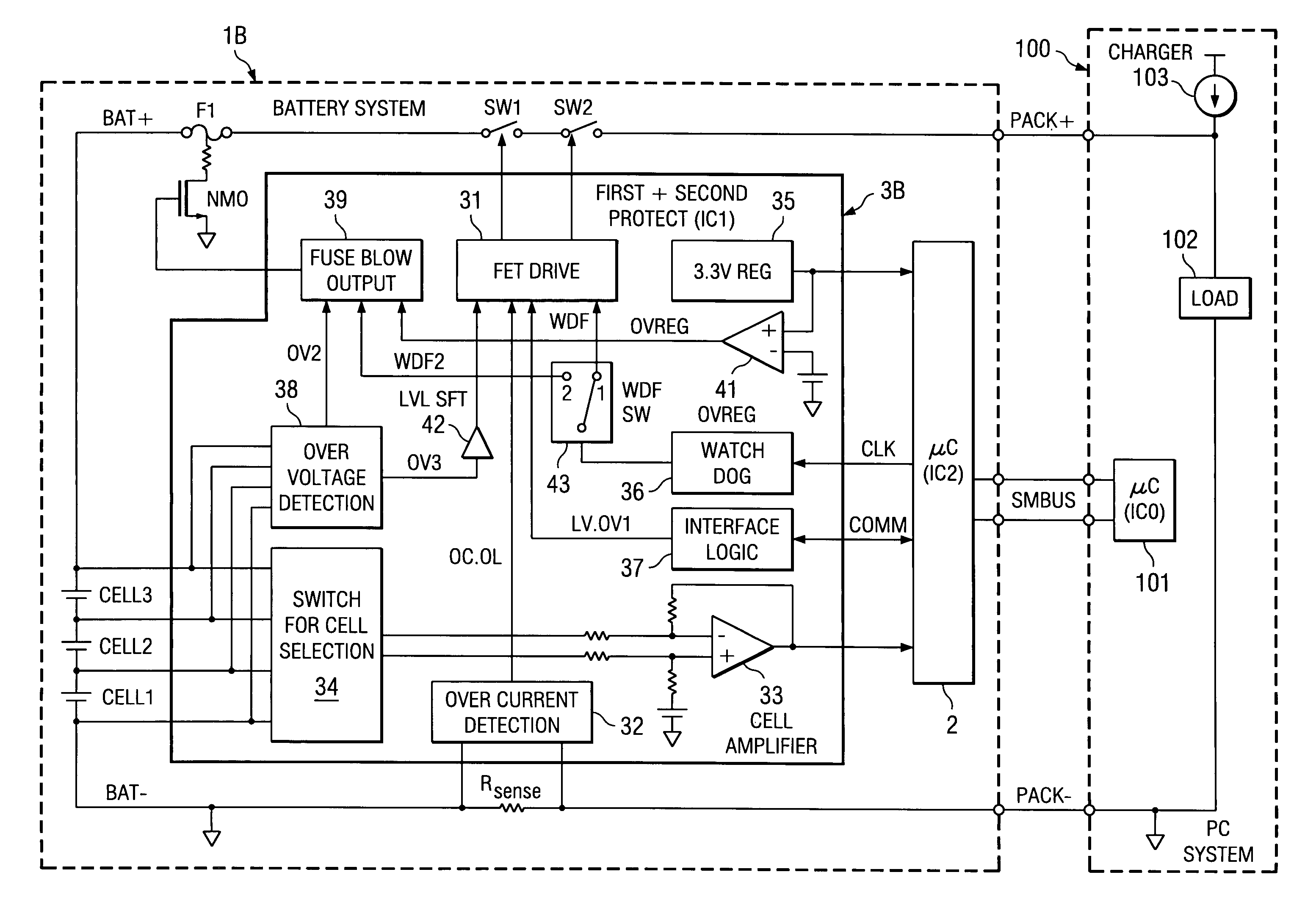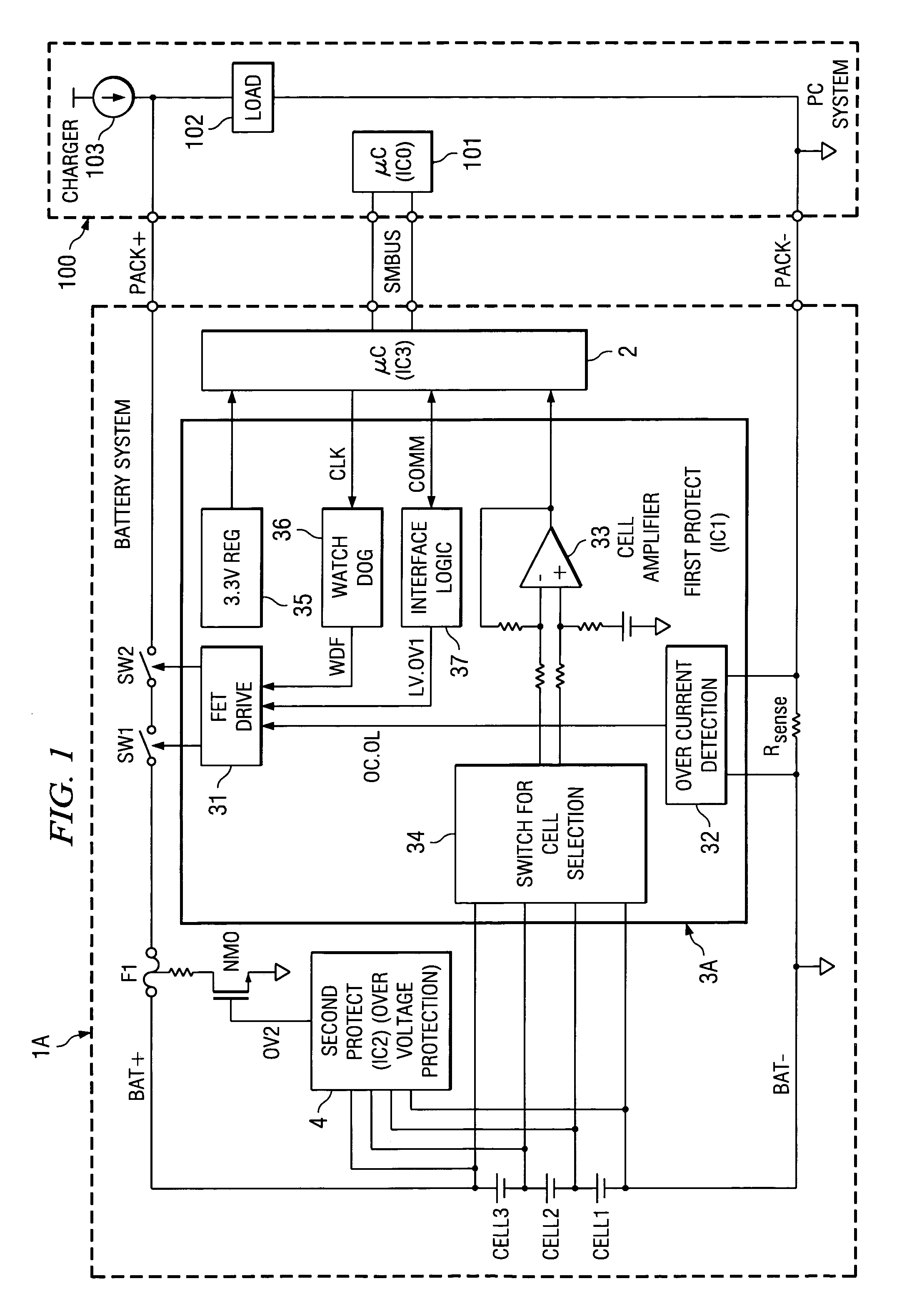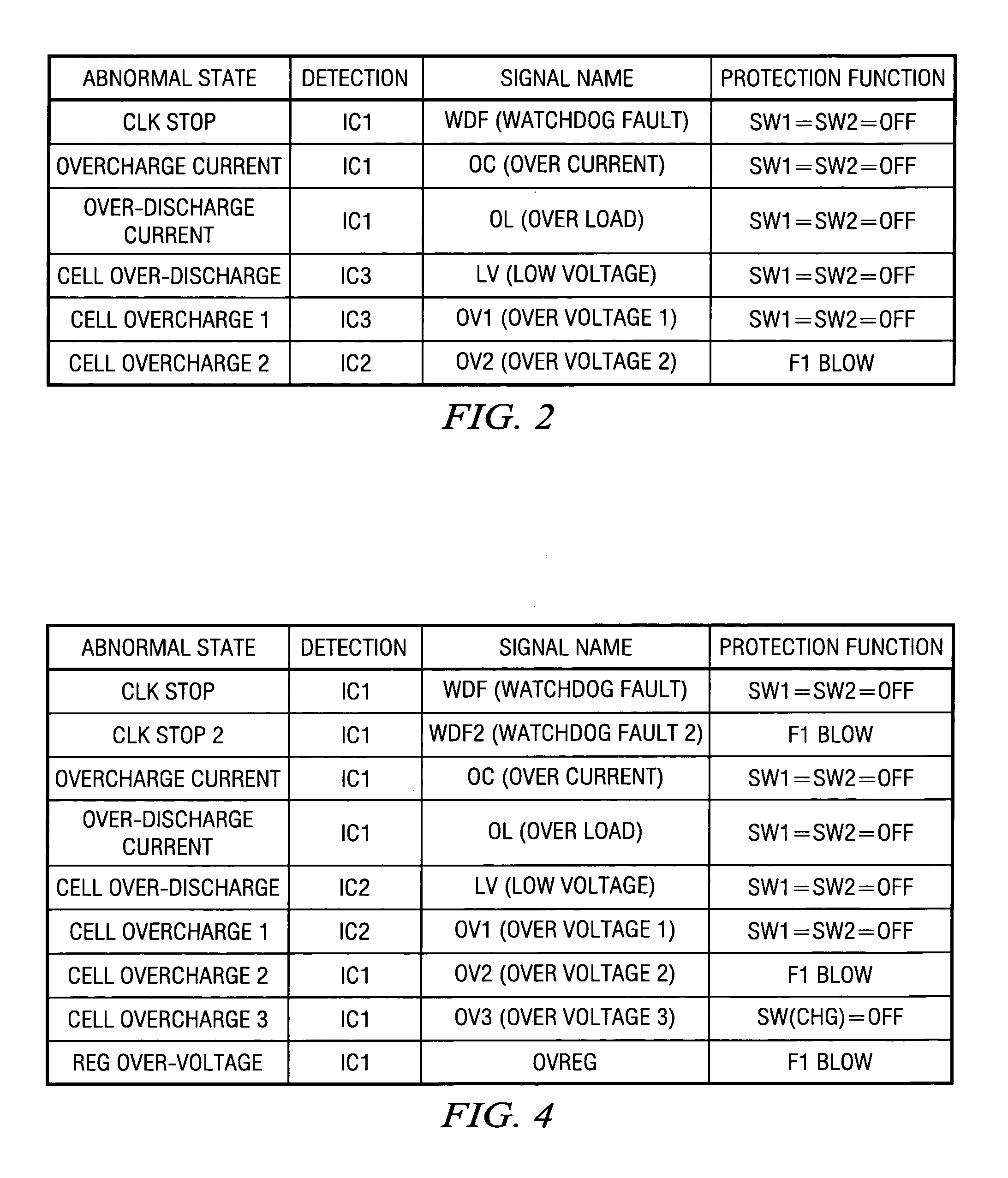Battery protection circuit
a protection circuit and battery technology, applied in the direction of safety/protection circuits, secondary cells, battery servicing/maintenance, etc., can solve the problems of difficult use, easy charge/discharge abnormalities, and difficulty in charging/discharge abnormalities, so as to achieve a higher protection level
- Summary
- Abstract
- Description
- Claims
- Application Information
AI Technical Summary
Problems solved by technology
Method used
Image
Examples
Embodiment Construction
[0030]For the battery protection circuit of the present invention, when secondary protection is performed, because the primary protection has been performed before it, the number of cycles of execution of the secondary protection that cannot be reset can be minimized, so that the operating efficiency can be improved. Also, the interlocked protection operation can be completed by the secondary protection control part (second protecting controller), it is easy to design the operation timing, etc. In addition, the primary protection side and the secondary protection side can work independently, and the primary protection performed from the secondary protection side is separated from the protection performed independently in the primary protection control part (the first protecting controller). Consequently, there is no decrease in the level of protection. On the contrary, it is increased. Also, with system abnormalities also taken into consideration, there is no mutual influence betwee...
PUM
 Login to View More
Login to View More Abstract
Description
Claims
Application Information
 Login to View More
Login to View More - R&D
- Intellectual Property
- Life Sciences
- Materials
- Tech Scout
- Unparalleled Data Quality
- Higher Quality Content
- 60% Fewer Hallucinations
Browse by: Latest US Patents, China's latest patents, Technical Efficacy Thesaurus, Application Domain, Technology Topic, Popular Technical Reports.
© 2025 PatSnap. All rights reserved.Legal|Privacy policy|Modern Slavery Act Transparency Statement|Sitemap|About US| Contact US: help@patsnap.com



